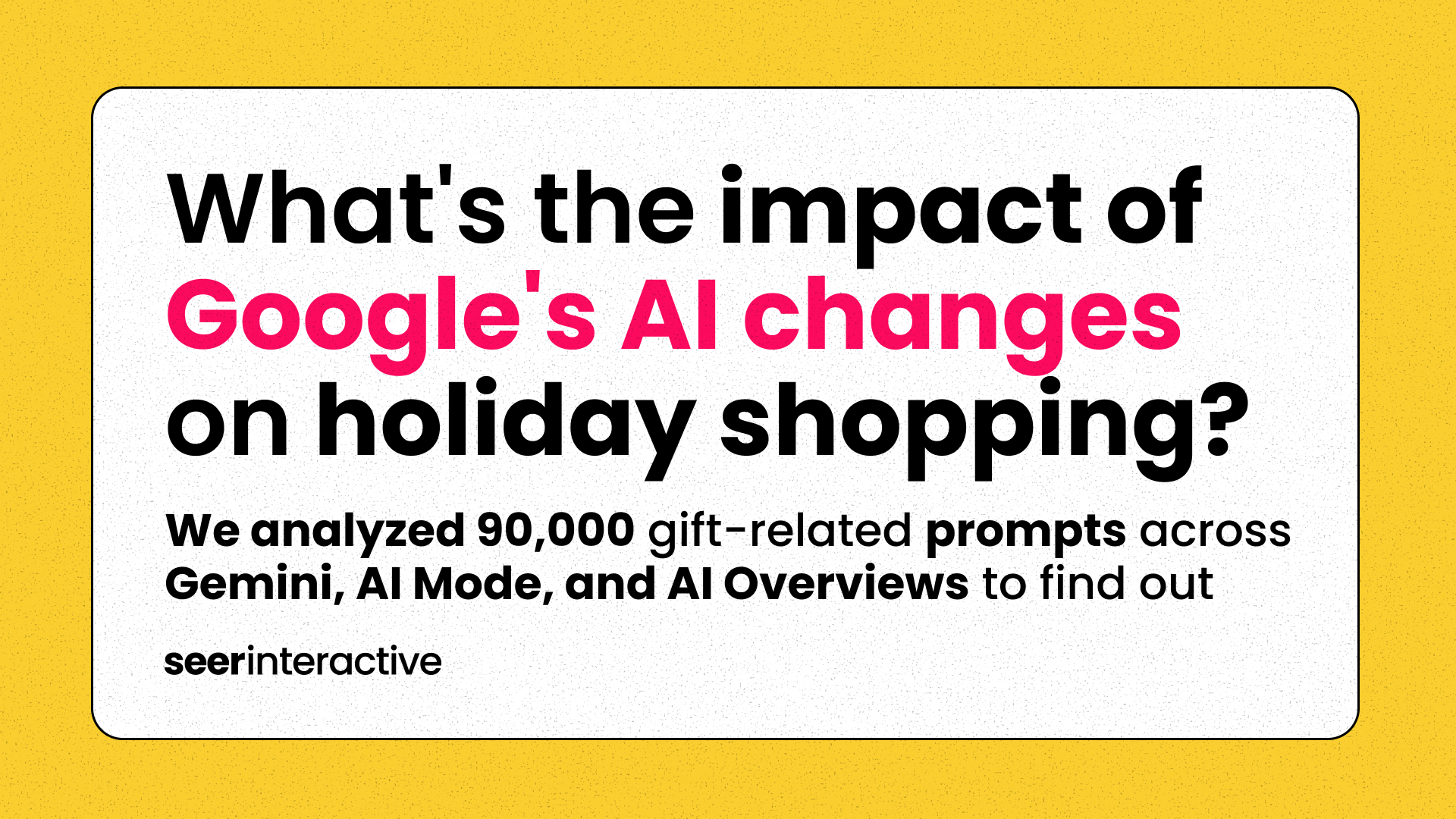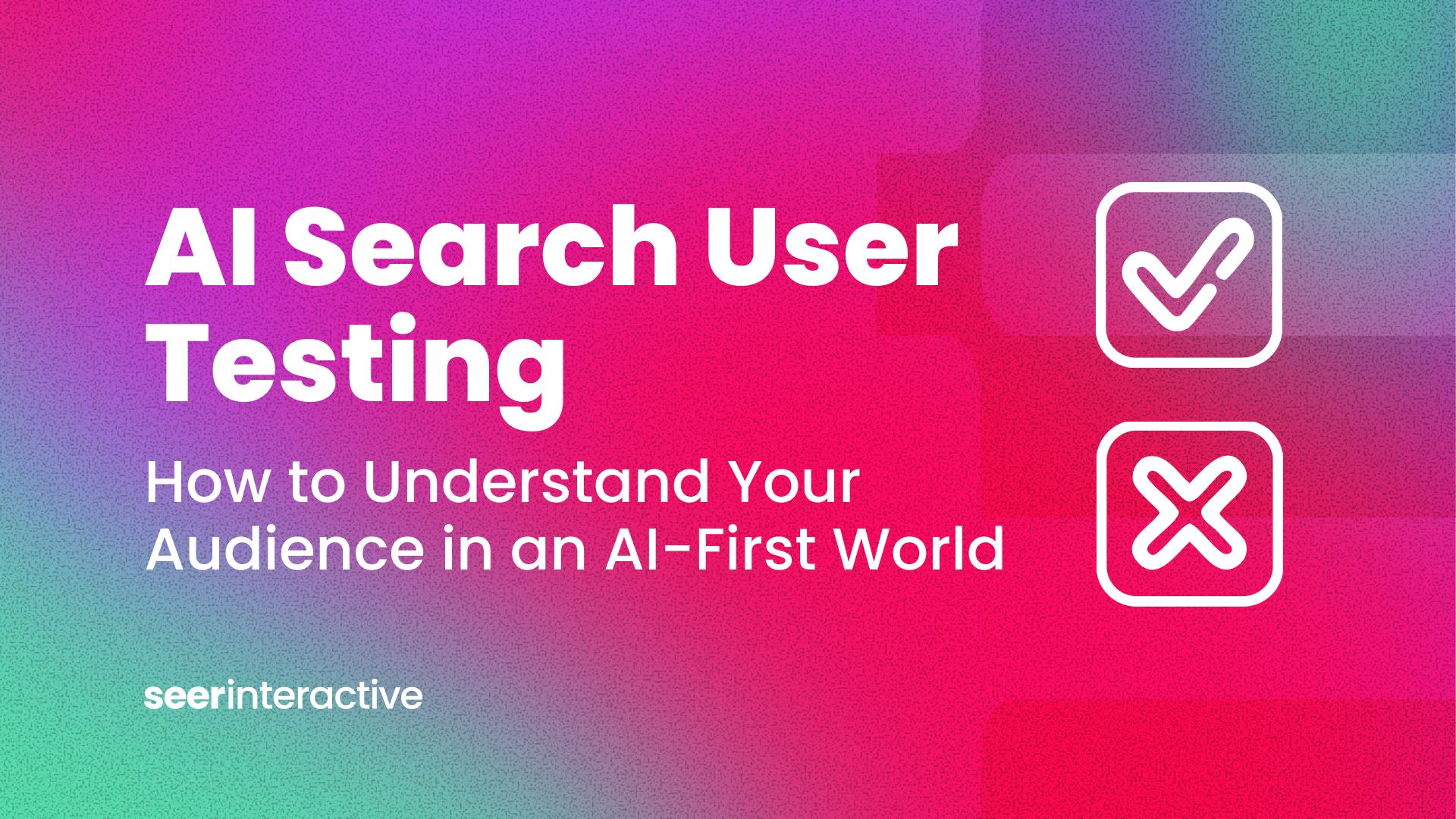Search is undergoing a shift with the rise of AI Overviews (AIOs). For both organic and paid search marketers, AIOs present new challenges by changing how users interact with search results. The question is "when to care" about AIOs and when to take action.
As Tracy recently shared, AIOs have introduced a stark reduction in both paid and organic click-through rates (CTRs).
When AIOs appear in search results Click Through Rates Drop:
- Paid drops from 21.27% to 9.87%
- Organic drops from 2.94% to 0.84%
So, we know that AI Overviews are likely to impact our brands--but to what degree? When do we need to shift from monitoring to taking action?

Client Challenge - "When should I care"
We once consulted with a client, who would constantly press us for the "when should I care" about whatever we were showing them, threshold. Thank you to that team, because it started to become embedded in how we looked at this issue and many others...every client has a different when to care threshold.
The fact that something went up or down isn't important
When it triggers a change in action on their part is.
The data:
Industry Level Analysis of AIOs
In January, AI Overviews appeared most frequently for search terms in Healthcare, Education, and Business Services. Searches in these industries can be complex and require deeper explanations, so it’s not a huge surprise.
Conversely, eCommerce and Retail clients had the least amount of AI Overviews present, which is also unsurprising as their queries tend to have transactional intent.
Increased Visibility of AIOs does not mean act now...
This tells us which industries are seeing the most disruption, but visibility alone isn’t enough to determine when a client should shift from monitoring to action. To advise your company on the impact of AIOs you need revenue-impacting data points, so you can flag when AIOs are impacting business outcomes. If AI Overviews are showing up for queries that contribute to revenue, they could be intercepting potential customers before they even reach our clients' sites.
SEO + AIO + SEM data take you from trends to when to care.

"We started first with which clients had the highest percentage of AIOs showing up. We pulled the top 10, then we pulled the top 10 for where AIOs showed up for the most CONVERTING keywords, only 1 of those 10 clients remained."
Finding “When to Care”: A Framework
Businesses that focus solely on visibility metrics could spend resources trying to impact AIOs when they aren’t significantly impacting revenue, taking away from higher priority initiatives.
Instead, marketers can monitor a few data points to triangulate how AI may be impacting their business:
Monitor AI Overview visibility: For overall and converting search terms (Paid Data): Don’t forget to keep an eye on how SERPs are shifting month-over-month.
From January to February, we saw the total number of search terms with AIOs showing drop by 21%, so it’s important to monitor SERP volatility ongoing.
Brand AIO's: Track your business’s coverage within AI Overviews through a tool like Ziptie: For some clients knowing when AIOs show up containing our brand can impact the “when to care” urgency level.
Bridge SEO and Paid Search team data: Compare each channel’s engagement and performance metrics to gauge the full impact of AIOs on your Search strategy and work together to align coverage.
Monitor referral traffic from AI platforms: Tracking referral traffic from these sources can provide early signals of shifting user behavior and potential opportunities for optimization.
Measure your audience’s shifting behavior: Sparktoro’s Search & AI Tools report compares your audience’s affinity towards broadly-defined Search and AI platforms, like ChatGPT and Reddit, with the general US population, adding more context into “when to care.”

Think about “when to care” data as a toolbox: SEO + AIO + SEM + Analytics + Sparktoro / Audience Data coming together to measure AI impact.
What Marketers Should Do Next

If you are seeing significant performance impacts from AI Overviews, below are a few actions you can take to actively adapt to AI-driven search changes:
- Diversify Channels: With organic and paid search CTR declining across the board, explore other platforms to capture audience engagement and expand brand visibility.
- Start Testing Influencing AIO's and AI engines: The SEO world is undergoing a major shift, and successful marketers can’t take a myopic view. Expanding beyond traditional search engine optimization by running experiments to impact AIOs and AI platform search. Learn more about how Seer is approaching GEO here.
- Set expectations on the right SEO KPIs to track: These shifts in the SERP and user behavior will impact SEO performance, and as Wil shared, it’s critical to level set with leadership on measuring the business impact from SEO vs vanity metrics.
👇Want your own "when to care about AIOs" dashboard rooted in conversions? 👇
Reach out to start mapping out your adjusted Search strategy today.


